Aperture's Blog, page 187
December 11, 2013
Recap: Prix Pictet: Power Opening Reception


Opening Reception for Prix Pictet: Power. Image courtesy Allison Kruger Pierce.

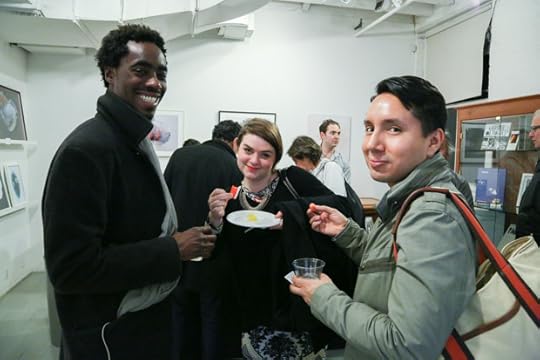
Opening Reception for Prix Pictet: Power. Image courtesy Allison Kruger Pierce.

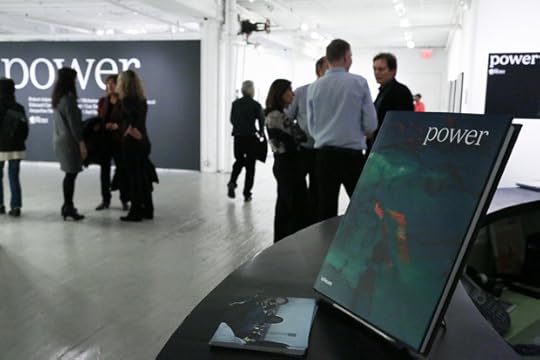
Opening Reception for Prix Pictet: Power. Image courtesy Allison Kruger Pierce.

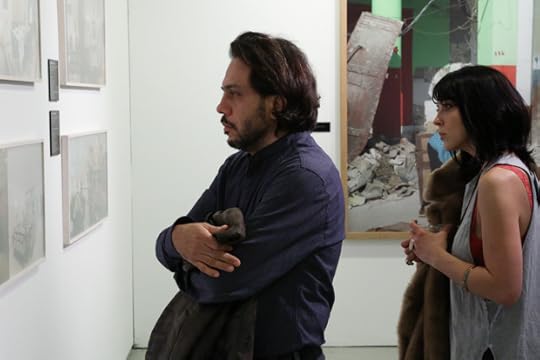
Opening Reception for Prix Pictet: Power. Image courtesy Allison Kruger Pierce.


Opening Reception for Prix Pictet: Power. Image courtesy Allison Kruger Pierce.


Opening Reception for Prix Pictet: Power. Image courtesy Allison Kruger Pierce.


Opening Reception for Prix Pictet: Power. Image courtesy Allison Kruger Pierce.


Opening Reception for Prix Pictet: Power. Image courtesy Allison Kruger Pierce.


Opening Reception for Prix Pictet: Power. Image courtesy Allison Kruger Pierce.

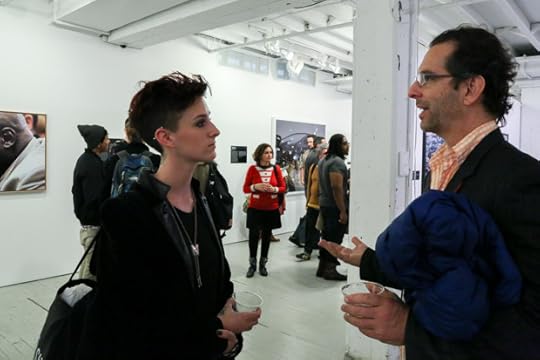
Opening Reception for Prix Pictet: Power. Image courtesy Allison Kruger Pierce.

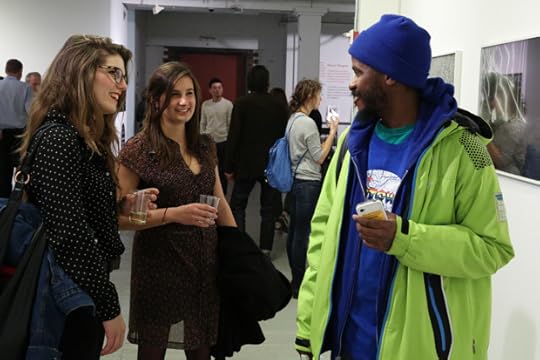
Opening Reception for Prix Pictet: Power. Image courtesy Allison Kruger Pierce.

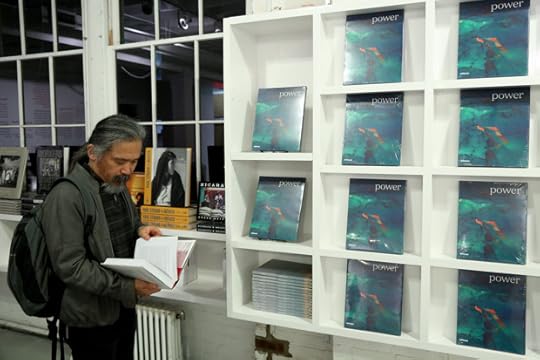
Opening Reception for Prix Pictet: Power. Image courtesy Allison Kruger Pierce.


Opening Reception for Prix Pictet: Power. Image courtesy Allison Kruger Pierce.


Opening Reception for Prix Pictet: Power. Image courtesy Allison Kruger Pierce.

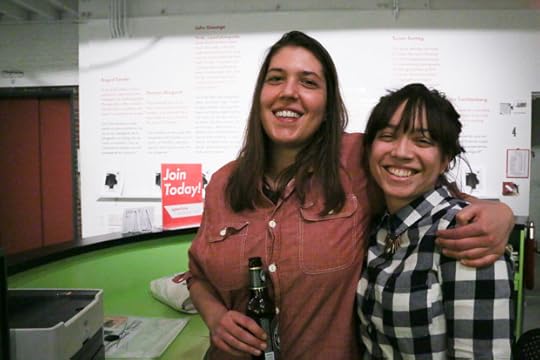
Opening Reception for Prix Pictet: Power. Image courtesy Allison Kruger Pierce.


Luc Delahaye, Ambush, Ramadi, Iraq, July 22, 2006; from Various works: 2008–2011
On December 5, Aperture hosted the opening reception for Prix Pictet: Power, an exhibition honoring the Pictet global award in photography and sustainability. Power, the theme of this year’s award, has enormous creative reach, embracing both hope and despair in equal measure. Over two hundred nominators worldwide recommended almost 650 photographers from seventy-six countries, many of whom presented images that are both awe-inspiring and disturbing.

Luc Delahaye, Ambush, Ramadi, Iraq, July 22, 2006; from Various works: 2008–2011
The exhibition features work by this year’s award winner, French photographer Luc Delahaye, and by eleven short-listed photographers. The short list includes Robert Adams (United States), Daniel Beltrá (Spain/United States), Mohamed Bourouissa (Algeria/France), Philippe Chancel (France), Edmund Clark (United Kingdom), Carl De Keyzer (Belgium), Rena Effendi (Azerbaijan/Egypt), Jacqueline Hassink (the Netherlands), An-My Lê (Vietnam/United States), Joel Sternfeld (United States), and Guy Tillim (South Africa).
Prix Pictet: Power will be on view at Aperture Gallery until January 30, 2014.
The post Recap: Prix Pictet: Power Opening Reception appeared first on Aperture Foundation NY.
December 4, 2013
Mark Steinmetz: Photographing Civilization
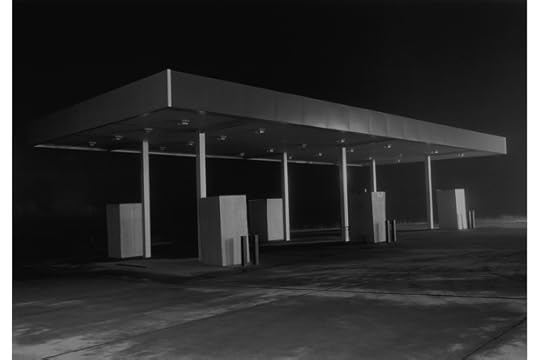

Steinmetz, Off Route 316, Barrow County, Georgia, 2005.


Steinmetz, Atlanta, 2007.


Steinmetz, Knoxville, 1992.
Photographs help us to picture ourselves. Images teach us about our cultural and geographic origins, with the camera as the stylus of civilization. Join Mark Steinmetz as he considers a lineage of American photography from Walker Evans through Robert Frank to Garry Winogrand and Lee Friedlander, and helps students to consider their work in an expanded context through a combination of lecture and portfolio review. Steinmetz will candidly present his own photography, discussing his experiences, publications, and inspirations. The curriculum will also cover bookmaking and sequencing as additional strategies for shaping groups of photographs. Photographers from diverse backgrounds are encouraged to apply, as the workshop will touch upon a range of subject matters and approaches. Lunch will be served.
Mark Steinmetz is a photographer and author of numerous titles, including South Central (2007), South East (2008), Greater Atlanta (2009), Summertime (2011), Italia (2010), Paris in My Time (2013), and The Players (2014).His work is included in the collections of New York’s Museum of Modern Art, Whitney Museum of American Art, and Metropolitan Museum of Art; the Art Institute of Chicago; and the San Francisco Museum of Modern Art, among others. Steinmetz has exhibited internationally, participating in exhibitions at the Museum of Modern Art, New York; Art Institute of Chicago; MiCamera, Milan; Philadelphia Photo Arts Center; Ogden Museum of Southern Art, University of New Orleans; High Museum of Art, Atlanta; Yancey Richardson Gallery, New York; Alibi Fine Art, Chicago; Box Galerie, Brussels; and Stephen Wirtz Gallery, San Francisco. Steinmetz has taught photography at Harvard University, Yale University, Sarah Lawrence College, Emory University, and University of Hartford. Steinmetz received a Guggenheim Fellowship in 1994. He lives in Athens, Georgia.
Tuition: $500 ($450 for currently enrolled photography students and Aperture members at the Friend level and above)
Click here to register.
Contact education@aperture.org with any questions.
Refund / Cancellation Policy for Aperture Workshops
All fees are non-refundable if you should choose to withdraw from a workshop less than one month prior to its start date unless we are able to fill your seat. In the event of a medical emergency, please provide a physician’s note stating the nature of the emergency, and Aperture will issue you a credit that can be applied to future workshops. Aperture reserves the right to cancel any workshop up to one week prior to the start date if the workshop is under-enrolled, in which case a full refund will be issued. A minimum of eight students is required to run a workshop.
The post Mark Steinmetz: Photographing Civilization appeared first on Aperture Foundation NY.
November 26, 2013
The Pigs – Carlos Spottorno Interview at Paris Photo 2013
Photographer Carlos Spottorno‘s publication The Pigs won the Photobook Award 2013 from Fotobookfestival, Kassel, Germany, and was short-listed for the Paris Photo–Aperture Foundation PhotoBook of the Year Prize. Here, he offers some pro tips on working with publishers, winning competitions, and promoting a book. Spottorno’s advice for those who want to get a book published:
“You want people to do things for you? You go meet them—go to their office. You need to take a plane? Take a plane. You go there and speak with them physically. It’s not via e-mail—you have lunch together. It’s something that you have to do.”
Spottorno also explains the recent photobook boom from a photographer’s perspective:
“The photobook boom is related to the need of photographers to put their work together in paper form, in this digital world. At the end, I think we all want to touch something.”
—
Video courtesy of Read That Image.
Learn more about the winners of the 2013 Paris Photo–Aperture Foundation PhotoBook Awards here.
The post The Pigs – Carlos Spottorno Interview at Paris Photo 2013 appeared first on Aperture Foundation NY.
November 25, 2013
City Shapes: Matthew Pillsbury with Michel Lussault (Video)
On October 19, Aperture Foundation, in partnership with Villa Gillet, presented an afternoon conversation between photographer Matthew Pillsbury and French geographer Michel Lussault. The event was organized for the launch of Matthew Pillsbury’s monograph, City Stages, as part of Walls and Bridges, a ten-day French-American arts and ideas festival curated by Villa Gillet.
Matthew Pillsbury presented a brief slideshow of his photographs capturing human activity in urban environments, ranging from isolated moments—people tuned into the omnipresent screens of tablets, laptops, televisions, and phones—to crowded spectacles at museums, parades, cathedrals, and even protests. In discussion, Pillsbury and Lussault shared observations and discussed the relationships between individuals, everyday environments, and the urban landscape. The conversation was followed by a brief Q&A and a signing of City Stages.
View “Matthew Pillsbury in Conversation with Michel Lussault,” parts 2, 3 and 4 on Vimeo.
—
Matthew Pillsbury’s City Stages (Aperture, 2013) is now available.
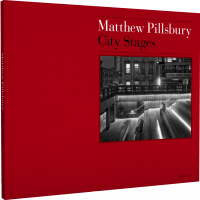 City StagesMatthew Pillsbury’s first monograph City Stages captures the vibrancy of urban landscapes in large-format, black-and-white photographs.
City StagesMatthew Pillsbury’s first monograph City Stages captures the vibrancy of urban landscapes in large-format, black-and-white photographs.
$65.00
 The New York Times Magazine Photographs
The New York Times Magazine Photographs
$75.00
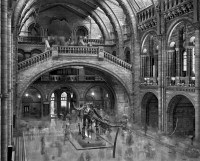 Diplodocus, Natural History Museum, London, 2007
Diplodocus, Natural History Museum, London, 2007
$1,800.00
The post City Shapes: Matthew Pillsbury with Michel Lussault (Video) appeared first on Aperture Foundation NY.
November 21, 2013
Shen Wei: I Miss You Already (Video)
On October 22, Aperture Foundation and Parsons the New School for Design presented an artist talk with photographer Shen Wei. Inspired by his conservative upbringing in Shanghai, Wei showed work exploring identity, memory, and sexuality. His series Chinese Sentiment documents modern China from an intimate perspective, while I Miss You Already exposes the artist’s own process of self-discovery. In both series, Wei’s images provided a seductive blend of instinct, fantasy, anxiety, and emptiness. A slideshow of images was shown, and time was granted for a brief Q&A at the end of the presentation.
View “Shen Wei: I Miss You Already” Parts 2, 3, and 4 on Vimeo.
—
Shen Wei’s limited-edition print Half Persimmon (2009) is now available.
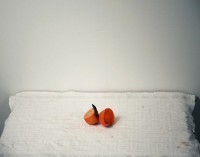 Half Persimmon, 2009
Half Persimmon, 2009$600.00
The post Shen Wei: I Miss You Already (Video) appeared first on Aperture Foundation NY.
November 20, 2013
Pictures in Motion

Eugene Robert Richee, Louise Brooks, Hollywood, 1927. An icon of modernist minimalism.
Most people have seen a film still or actor’s portrait that has made them look twice and realize the artistry behind movie publicity. Mine was a photograph of silent film star Louise Brooks, her black robe and dark cropped hair dissolved into an inky abyss. The only visible elements in Eugene Robert Richee’s minimal 1927 composition were Brooks’s face, hands, and the string of pearls clasped in them. Her dissected body hovers amid the darkness like a surreal statue. Man Ray, in his many years working in Hollywood, never captured anything this strange.
This startling modernist photograph appears near the end of Still: American Silent Motion Picture Photography, David S. Shields’s survey of photography from cinema’s silent era. To put into perspective how overlooked images from this period have been, consider that in previous histories of Hollywood film photography, Richee’s vision of Brooks would appear at the beginning of the book. John Kobal, the collector and historian who rescued film stills and portraits from being seen as throwaway publicity material, saw little image-making of note before sound, remarking in his 1976 book Hollywood Glamour Portraits that photographs of actors in the 1920s were “not that much different to the sort that might be seen in any small town” and that any extraordinary images were so “because of the subject, rarely because of the photographer.”
In Still, Shields spends 401 pages refuting this, employing a strict editing process to gather a selection of the most exceptional images produced by the large number of little-known photographers working during this time (many of whom were rarely allowed a signature on their work). But what could easily have been a glossy, visual celebration of silent-era film photography is instead a forensic study, the product of years of research and archive-scavenging; Shields began writing the book in 2004. He reaches back, right to the origins of cinema, long before the studios emerged—when actors and starlets-to-be all traveled to independent photography studios—and he traces the emergence of the cinematic photo from the worlds of theatrical publicity and society portraiture. He maps its evolution from adorning the cabinet cards collected by fans to mass-production in newspapers and magazines (from the early 1910s onward), while also illustrating how its importance grew with the rise of feature-length films and the birth of the major studios.
Of course, it is of little surprise that stills and portraits from this period are so arresting. This was when movies were pictures in motion, cinema was known as “photoplay,” and spectacle was the chief export of the dream factory. Photography itself was not sixty years old when the movies were born, and so this is an exploration of how one nascent medium recorded another. Shields charts technological and aesthetic developments, noting how photographers began to refuse the movie camera’s perspective on set, how they welcomed and experimented with artificial light, and how they tried to challenge tired modes of representation (choosing mystery over likeness; depicting not just subjects, but moods). Throughout, Shields interrogates the meaning of glamour, excavates a buried corner of photography’s past, and tells the story of silent cinema—its ambitious directors, stars, opulent designs, and special effects—from an unusual angle.
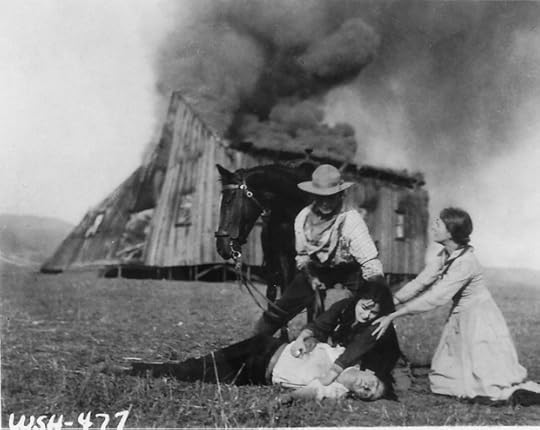
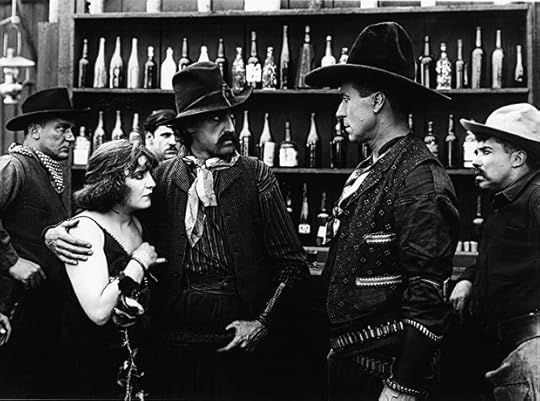
Top: Junius “June” Estep, William S. Hart as Blaze Tracy in Hell’s Hinges, Los Angeles, Kay-Bee Pictures, March 5, 1916. The apocalyptic final fight in which Blaze Tracy personally pummels corrupt Rev. Bob Henley while the tainted village of Hell’s Hinges burns in the fire’s judgment. Bottom: Junius “June” Estep, William S. Hart, as the title character in Selfish Yates, Los Angeles, Artcraft Pictures, May 12, 1918.
The detailed profiles of so many photographers are the book’s triumph: key early innovators such as Arnold Genthe, whose ghostly, soft-focus portraits did away with the elaborate staging his contemporaries depended upon; revelations like M. I. Boris, who, under the influence of Symbolism, etched into his photographs; and unsung image masters such as Junius “June” Estep, who captured the epic, inhospitable Western landscape like no one else. Shields delves into their lives, illuminating their varied backgrounds (medical photography, conservation, even priesthood), how they talked their way onto movie sets, and, in some cases, their sad fates. For example, Jose Maria Mora, who became a recluse, was discovered on his death surrounded by images of the beauties he made famous. Shields even notes how his bathtub was filled with yellowed theatrical programs.
Also discussed are lesser-known images from celebrated Golden Age photographers, those who learned their craft in the silent era, such as Frank Powolny, whose elaborate forested nightmares for Dante’s Inferno provide a different breed of visual fantasy than his later iconic shots of Betty Grable and Marilyn Monroe. Collaborations between photographers and directors—in particular Edward S. Curtis, who funded his ethnographic experiments by recreating medieval Persia for Ferdinand P. Earle from Earle’s seven hundred sets and three hundred painted backgrounds—provide another fascinating chapter in Shields’s history.
It was, of course, nearly always a male gaze behind the lens, but Shields does highlight the importance of two female figures: Lillian Gish and Alla Nazimova, performers who recognized the importance of photography and had the clout to champion adventurous still men such as Hendrik Sartov, James Abbe, and Arthur Rice. Renowned art photographers of the time are also mentioned, among them Edward Weston, but an in-depth contextualization of their work with that of the still men is the book’s only lacking feature (but is perhaps the subject of another tome entirely).

James Abbe, Mary Pickford as Amanda Afflick in Suds, Hollywood, Mary Pickford Company, United Artists, January 7, 1920. Dressed as a fantasy princess in the daydream of a kitchen drudge. Gown by Adele Crinley.
As Shields reminds us, over 80 percent of silent cinema is missing, presumed destroyed. In some instances these stills and portraits are the only remaining records of a film. In others, the photographs point to what a movie could have been had the grandiose follies of a director not dominated. Just as there were landmark productions (two hundred stills courtesy of Karl Strauss for Quo Vadis in 1912) there were also early mistakes (the toilet plungers which adorned horse-riders’ heads but weren’t noticed in the flurry of D. W. Griffith’s The Birth of a Nation, but which were plain to see when frozen in cinematographer William Blitzer’s stills). Shields highlights the vast difference between these blurred, amateur snaps with those meticulous, epic scenes photographer James E. Woodbury labored over for Griffith’s next feature, Intolerance.
Today, would a big studio’s publicity department ever allow Twilight star Kristen Stewart to look as deranged as her 1915 vamp counterpart Theda Bara did when shot by Jack Freulich for Sin, her hands gripping tufts of hair above her head? Not just a reappraisal of a collection of daring, innovative artisans, Shields’s book makes all too apparent how bland and safe contemporary movie stills and portraits really are.
—
Isabel Stevens works at Sight & Sound magazine. Her writing on film and photography has appeared in numerous publications, including the Guardian, Icon, Source, and World of Interiors. Follow her on Twitter: @IsStevens
The post Pictures in Motion appeared first on Aperture Foundation NY.
JH Engström: Sketch of Paris (Video)
On Wednesday, November 6, Aperture Foundation and the Consulate General of Sweden hosted a conversation with Swedish photographer JH Engström in honor of his first U.S. publication, Sketch of Paris (Aperture, 2013). Engström has lived and worked in Paris for over twenty years, and this body of work presents a gritty, no-holds-barred, guided tour of life in his adopted city. Engström leads us to read the photographs included in this volume as a type of homage to a city that has greatly influenced and inspired him as a photographer and as a person.
View “JH Engström: Sketch of Paris” Parts 2 and 3 on Vimeo.
—
Sketch of Paris, photographs by JH Engström, and the Trying to Dance Portfolio, (2004) are now available.
 Sketch of ParisJH Engström’s Sketch of Paris is a raw, lyrical homage to a city that has influenced and inspired him.
Sketch of ParisJH Engström’s Sketch of Paris is a raw, lyrical homage to a city that has influenced and inspired him.
$65.00
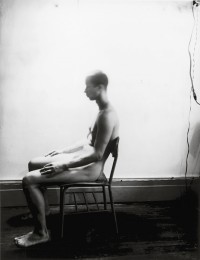 Trying to Dance Portfolio, 2004
Trying to Dance Portfolio, 2004
$2,500.00
 CDG/ JHE #41, 2006
CDG/ JHE #41, 2006
$1,800.00
The post JH Engström: Sketch of Paris (Video) appeared first on Aperture Foundation NY.
November 18, 2013
Rick Sands: Breaking the Light Barrier



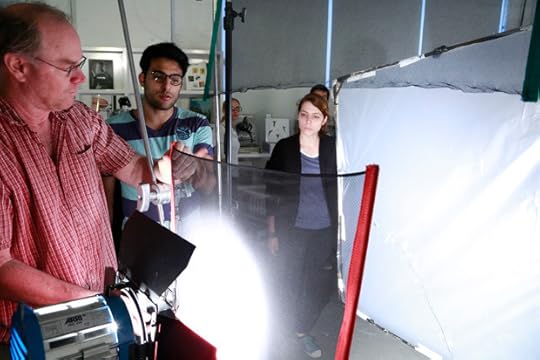

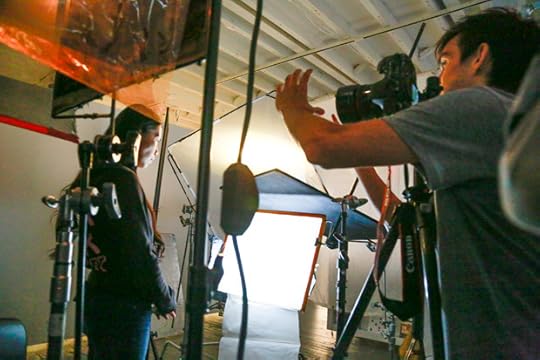



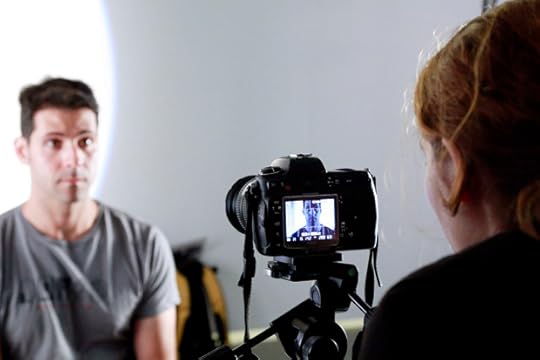
I always call him “the genius of light.” He puts all of the lighting scenes together. He thinks differently than everyone else I know. He just responds to light. It’s remarkable.
—Gregory Crewdson on Rick Sands
Join master illuminator Rick Sands for “Breaking the Light Barrier,” a workshop for photographers who would like to improve their understanding of lighting—from conceptualization through execution. For nearly fifteen years, Sands has created elaborate lighting for the narrative photographs of artist Gregory Crewdson. The class will cover varied philosophies of lighting technique, working under a wide range of conditions (day as well as night, interior as well as exterior) and studying separation through use of contrast via intensity and color. The class will also cover practical aspects like scheduling and budgetary concerns. Participants will then form teams to produce projects employing the techniques covered under the curriculum. The main objective of the class is to create and extend a lighting vernacular that allows you to design and execute diverse projects. Participants will gain a comfort and confidence level enabling them to work adeptly throughout the lighting design process.
Over the course of six days, “Breaking the Light Barrier” will cover contextual light, interior lighting, exterior lighting, and project flow as separate units of study. Each unit will be comprised of conceptual overview, study of examples, equipment demonstration, training exercises, and experimentation. Students will be asked to complete four assignments, the last being a comprehensive production exercisetaking place over three days. Additional concepts reviewed will include the motivation of light, the study of ambient light, light plots, the importance of time-of-day, and the set environment and its effect on lighting.
Rick Sands is a film technician whose roots are in cinema production. His portfolio includes thirty-five theatrically released motion pictures with directors such as Steven Spielberg and Francis Ford Coppola, forty-seven television movies, and countless one-hour television episodes. His work in advertising has won him several ADDY awards. Through his unique collaboration with Gregory Crewdson, Sands’s lighting has been featured in six books and several international exhibitions.
The post Rick Sands: Breaking the Light Barrier appeared first on Aperture Foundation NY.
Rinko Kawauchi: The Poetics of Photography




Leading up to the opening of Ametsuchi at Aperture Gallery, Rinko Kawauchi led an insightful workshop over the weekend of September 14 and 15. Students spent a rare eight hours with the Japanese artist, working through presentations and conducting a portfolio review. The course cultivated an intuitive approach to all aspects of photographic workflow, from shooting to bookmaking, and students were left with a refreshed conception of the poetics of photography.
From the students:
“Rinko’s ability to expand on ideas about process and the nature of photography was very helpful.”
“The discussion was enlightening . . .”


Rinko Kawauchi, Untitled, 2013

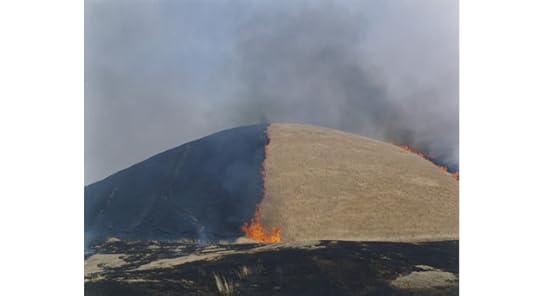
Rinko Kawauchi, Untitled, 2012

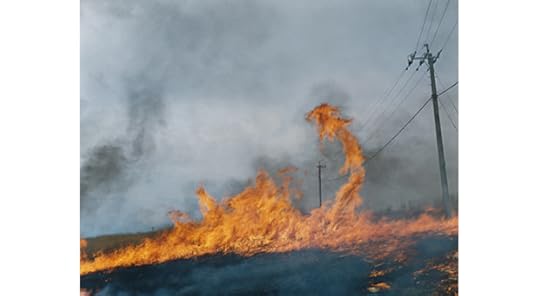
Rinko Kawauchi, Untitled, 2012


Rinko Kawauchi, Untitled, 2012

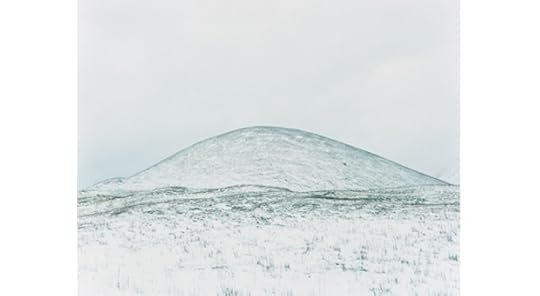
Rinko Kawauchi, Untitled, 2013
Join Rinko Kawauchi for a weekend workshop intended for the amateur and professional photographer seeking to re-examine his or her photographic practice. Through presentation, critique, and discussion, Kawauchi will provide students with the vocabulary required to articulate the intentions behind their work; the skills to effectively sequence and present their work; and strategies for professional growth. The workshop will commence with the friendly discussion of student portfolios, during which each student will receive personalized feedback and tasks for improvement. The discussion will continue around techniques for directly and spontaneously photographing the world around you. The main objectives of the workshop are to visually investigate human relationships, desires, and aspirations; explore new photographic avenues; and to diversify students’ creative palettes. Participants in the workshop should have a dedicated body of work that they feel comfortable sharing with others. Coffee and light snacks will be served.
Born in Shiga, Japan, in 1972, Rinko Kawauchi Lives and works in Tokyo. She began her career with the sensational, simultaneous publication of three books: UTATANE, HANABI, and HANAKO (Little More, 2001). With these works, she became recognized for her uncanny ability to photographically transform everyday details into significant existential ruminations. Since her debut, Kawauchi has published numerous monographs, including Illuminance (Aperture, 2011) and Ametsuchi (Aperture, 2013), and been widely exhibited, including shows at the Tokyo Metropolitan Museum of Photography; ARGOS Centre for Art and Media, Brussels; Museu de Arte Moderna de São Paulo; Photographers’ Gallery, London; and Foundation Cartier pour l’Art Contemporain, Paris. Kawauchi received a 2009 ICP Infinity Award and took the Grand Prix Prize at the Guardian Garden’s 9th Hitotsubo Exhibition in 1997.
 AmetsuchiShifting her attention from micro to macro, Rinko Kawauchi documents constellations and traditional controlled-burn farming in Ametsuchi.
AmetsuchiShifting her attention from micro to macro, Rinko Kawauchi documents constellations and traditional controlled-burn farming in Ametsuchi.$80.00
The post Rinko Kawauchi: The Poetics of Photography appeared first on Aperture Foundation NY.
November 15, 2013
Announcing the Winners of The Paris Photo—Aperture Foundation PhotoBook Awards 2013
Paris, November 15, 2013—Paris Photo and Aperture Foundation are pleased to announce the winners of The Paris Photo—Aperture Foundation PhotoBook Awards. A01 [COD.19.1.1.43] — A27 [S | COD.23] by Rosângela Rennó (Self-published) has been selected as the PhotoBook of the Year, and KARMA by Óscar Monzón (RVB Books, Paris / Dalpine, Madrid) is the winner of $10,000 in the First PhotoBook category.
A jury in Paris, including Gerry Badger, photographer, architect, and critic, Dr. Tobia Bezzola, Director of Folkwang Museum (Essen), Dr. Harald Falckenberg, Sammlung Falckenberg / Deichtorhallen Hamburg, Thyago Nogueira, Contemporary Photography Coordinator / ZUM Magazine Editor, Instituto Moreira Salles (Rio de Janeiro), and Maia-Mari Sutnik, Photography and Special Projects Curator of Art Gallery of Ontario (Toronto), selected the winners.
The thirty outstanding photobooks shortlisted for the Paris Photo–Aperture Foundation PhotoBook Awards 2013 are currently being exhibited at Paris Photo at the Grand Palais and will also be presented at Aperture Gallery in New York, December 5, 2013–January 30, 2014. The exhibition will travel thereafter to Copenhagen Photo Festival, Copenhagen, Denmark, June 5-15, 2014; PhotoIreland Festival, Dublin, July, 2014; Backlight Photo Festival, Tampere, Finland, September 2014, and FotoFocus Cincinnati, October 8-12, 2014, among other venues. The shortlist was first announced in The PhotoBook Review 005, Aperture’s biannual publication dedicated to the consideration of the photobook, and is also available at Paris Photo’s website.
The initial selection was made in New York by Vince Aletti, curator, critic, and author who writes photography reviews for the New Yorker; Julien Frydman, director of Paris Photo; Lesley A. Martin, publisher of the Aperture book program and of The PhotoBook Review; Mutsuko Ota, editorial director of IMA magazine; and Barbara Tannenbaum, curator of photography at the Cleveland Museum of Art.
Initiated in November 2011 by Aperture Foundation and Paris Photo, the Paris Photo–Aperture Foundation PhotoBook Awards celebrate the photobook’s contribution to the evolving narrative of photography, with two major categories: First PhotoBook and PhotoBook of the Year. In 2012, First PhotoBook of the Year was awarded to Concresco by David Galjaard (Self-published), and PhotoBook of the Year went to City Diaries by Anders Petersen (Steidl).
The post Announcing the Winners of The Paris Photo—Aperture Foundation PhotoBook Awards 2013 appeared first on Aperture Foundation NY.
Aperture's Blog
- Aperture's profile
- 21 followers



